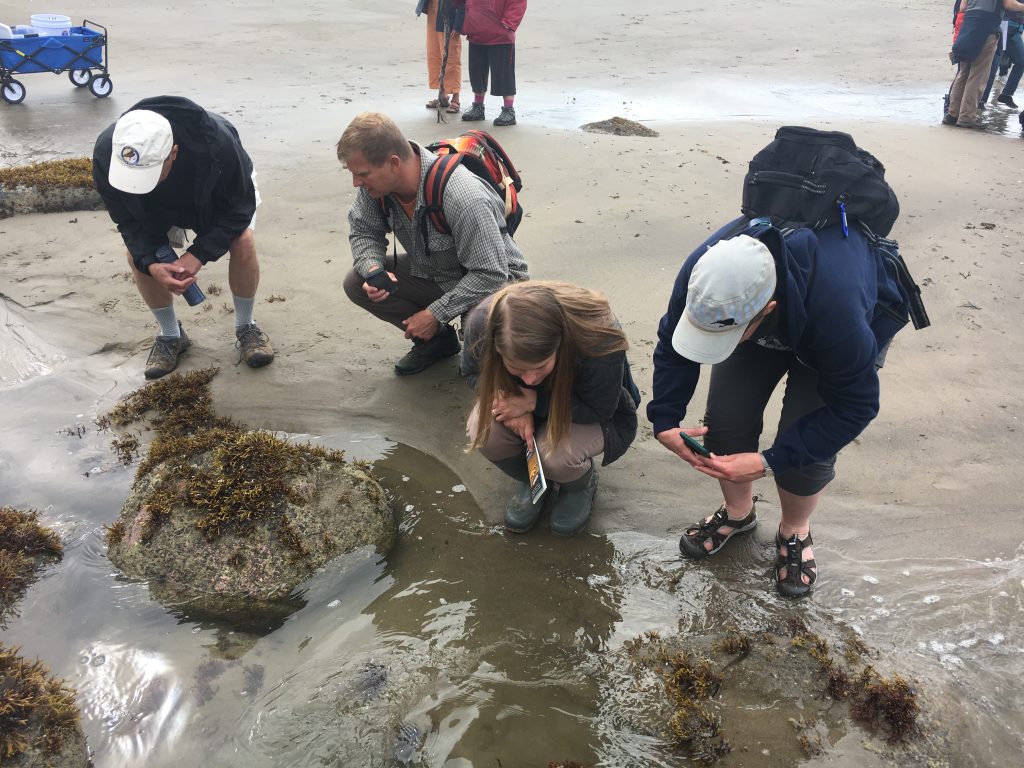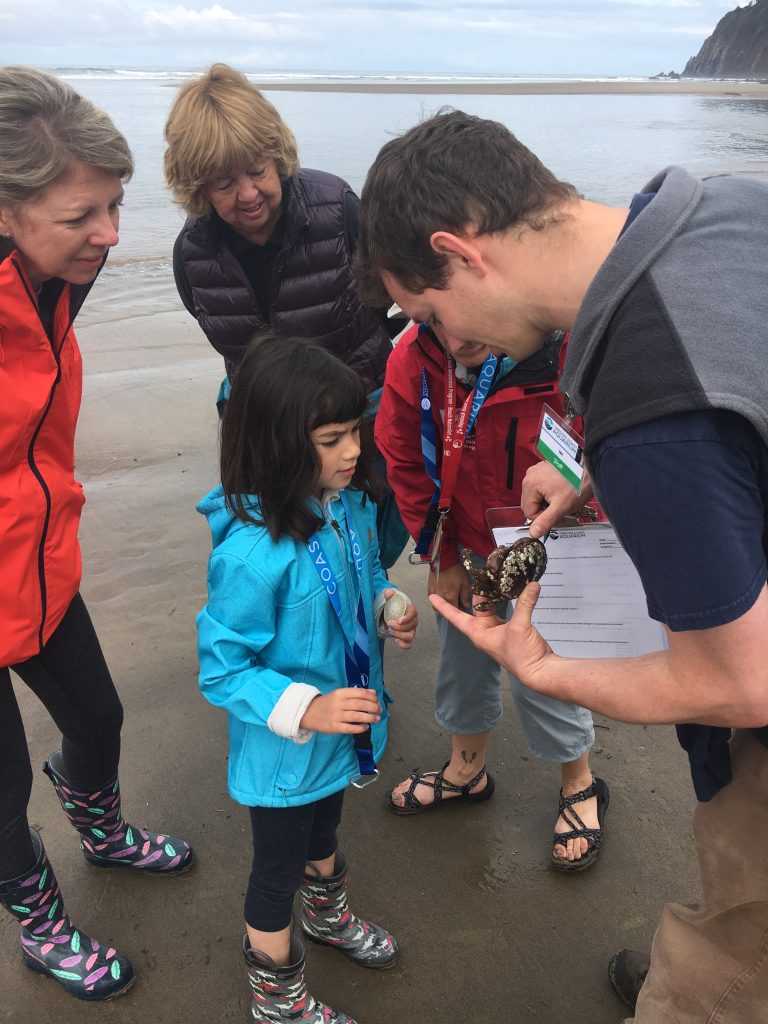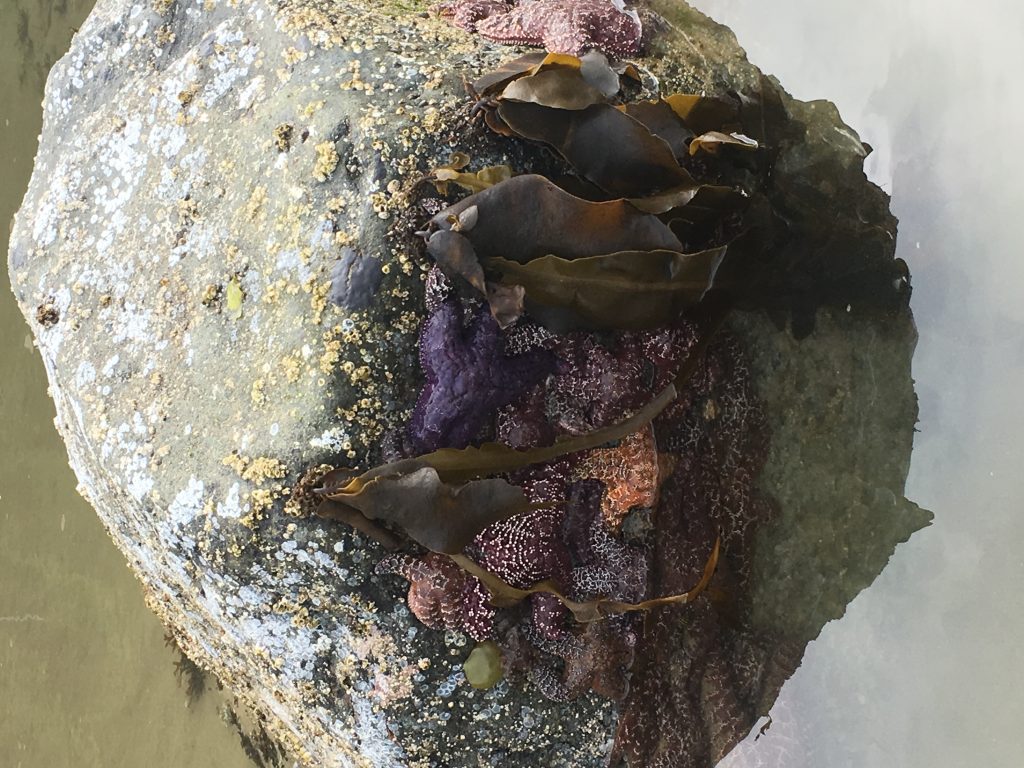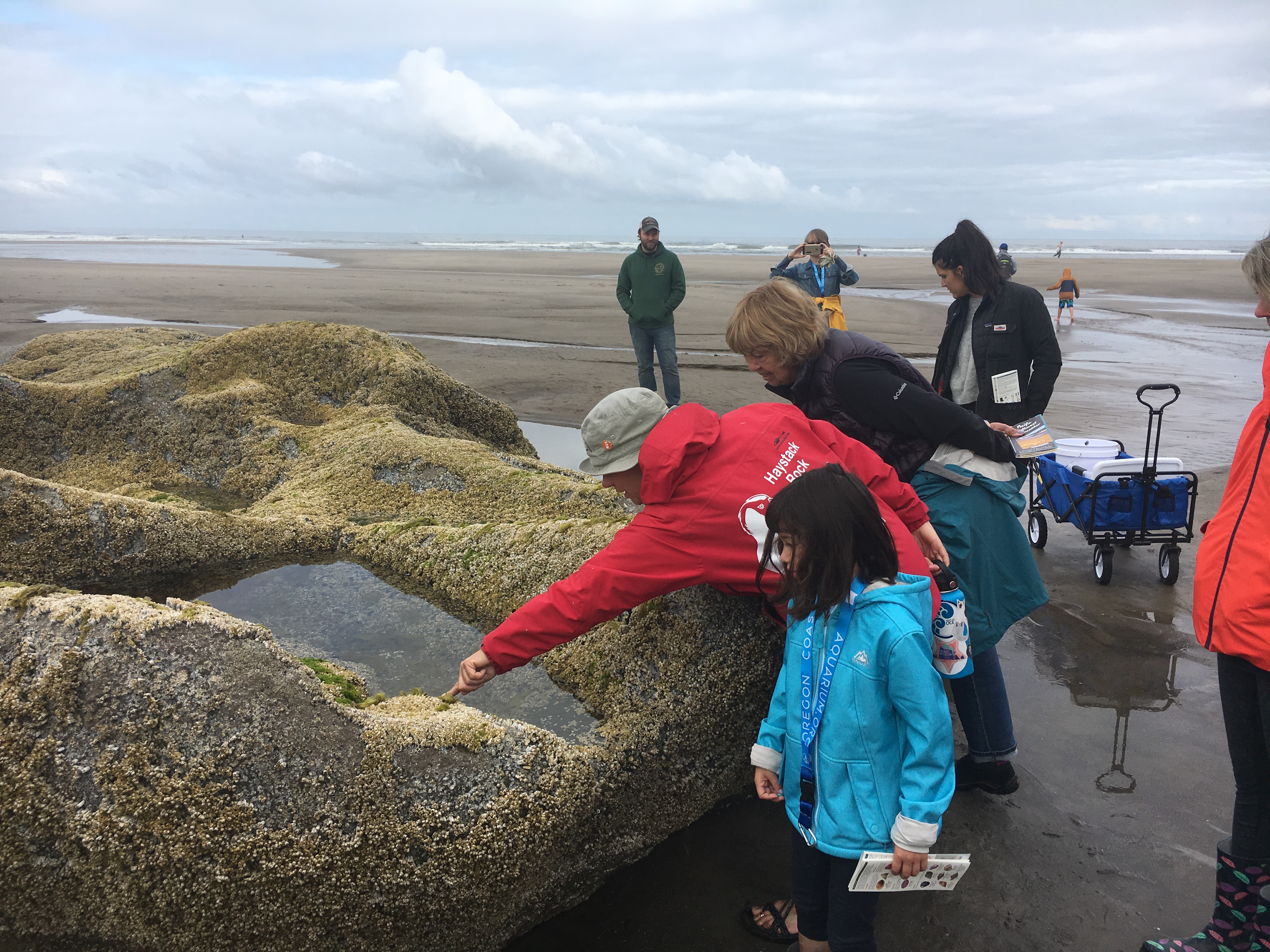By Dan Haag
On Saturday, July 6, 14 people gathered on Neah-Kah-Nie Beach for a “Beach & BioBlitz.” Presented by the Explore Nature Tillamook Coast series, it was a chance to get an up-close look at beach life during low tide and to become citizen scientists for a morning.
Friends of Cape Falcon Marine Reserve, Lower Nehalem Community Trust, Haystack Rock Awareness Program, and Oregon Coast Aquarium partnered to lead the educational walk exploring the connections between headwaters and local seas.
While it’s certainly a fun word to say, what exactly is a BioBlitz?
The term “BioBlitz” was first coined by U.S. National Park Service naturalist Susan Rudy while assisting with the first BioBlitz, held at Kenilworth Aquatic Gardens in Washington. D.C, in 1996. Approximately 1,000 species were identified at this first event.
This first accounting of biodiversity was organized by Sam Droege of the United States Geological Survey and Dan Roddy of the National Park Service with the assistance of other government scientists.
“Our BioBlitz idea was that it should be an event,” Droege told National Geographic in 2016. “What we were trying to do was show people that even in the middle of the city there is a lot of life, a lot of really cool things.”
Since then, most BioBlitz events contain a public component so that adults, kids, teens and anyone interested can join experts and scientists in the field. Participating in these hands-on field studies is a fun and exciting way for people to learn about biodiversity and better understand how to protect it.
“Events like the BioBlitz are important for Friends of Cape Falcon Marine Reserve’s (CFMR) mission of outreach and supporting citizen science efforts,” said Margaret Minnick, outreach coordinator for CFMR. “They provide an opportunity for participants to learn about marine life and how to be a good steward of nature.”
In the case of this intertidal BioBlitz, participants were encouraged to enjoy observing and learning about tide pool creatures while contributing data to iNaturalist.
To help participants become citizen scientists – not just for the day, but whenever they walk the beach – Ian Throckmorton of Oregon Coast Aquarium gave the crowd a rundown on iNaturalist.
Launched in 2008, iNaturalist is a citizen science project and online social network of naturalists, citizen scientists, and biologists built on the concept of mapping and sharing observations of biodiversity across the globe.

This process allows users to share information on what they saw, where they saw it, and compile an online database. This data is used by scientists studying ocean health, including those tracking recovery of the west coast’s sea star population from sea star wasting disease.
“It works where ever you go, all around the world, and allows scientists and researchers to access that info,” Throckmorton said.

Location was the star of the show: the end of Neah-Kah-Nie Beach connects with Cape Falcon Marine Reserve and Lower Nehalem Community Trust’s Peregrine Point, a protected lush green forest rising from the sand that extends the protected lands of Oswald West State Park.
Because the event coincided with some of the lowest tides of the year it was BioBlitz heaven. The tide pools were full of a variety of sea life waiting to be discovered and inventoried: hermit crabs, anemones, limpets, varieties of seaweed, and more.

Afterward, several participants gathered at the Manzanita Visitors Center for snacks and to share pictures and ask questions about what they’d seen.
With such a strong turnout and dedicated partners, Minnick wants the BioBlitz to be a stepping stone for everyday folks to learn about marine science.
“I hope that participants come away with not only fun memories and appreciation of the rich variety of tide pool life, but also an understanding of the importance of intertidal habitats to the greater ecosystem of this area,” added Minnick.
•To learn more about Oregon’s Marine Reserves, visit www.oregonmarinereserves.com
•To discover other Bioblitz events within Oregon’s Marine Reserves, visit http://aquarium.org/bioblitz/
•Check out Explore Nature’s schedule by visiting www.explorenaturetillamookcoast.com


